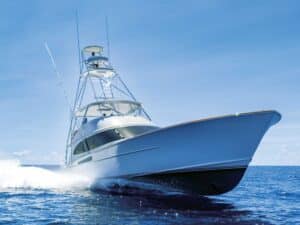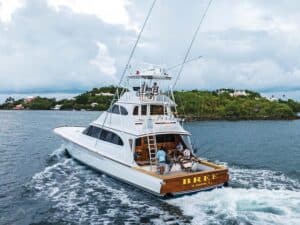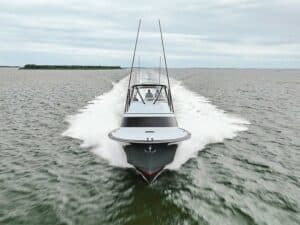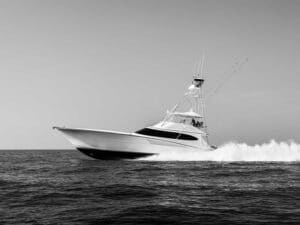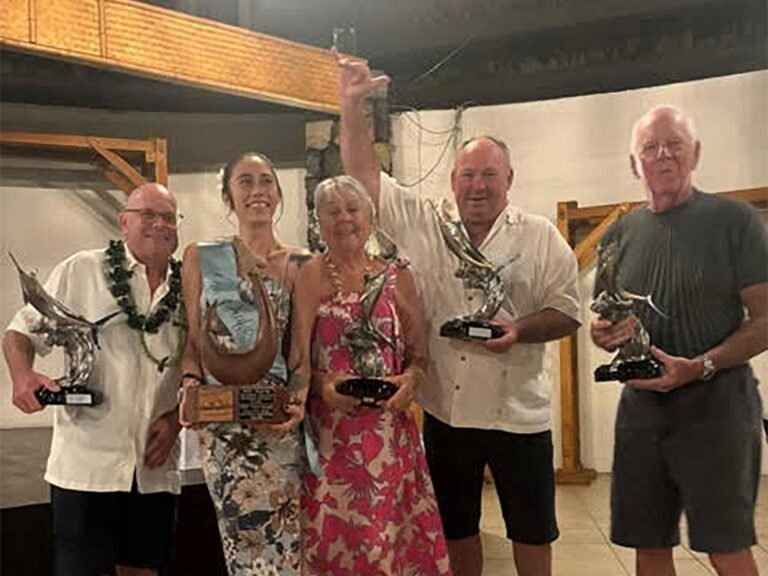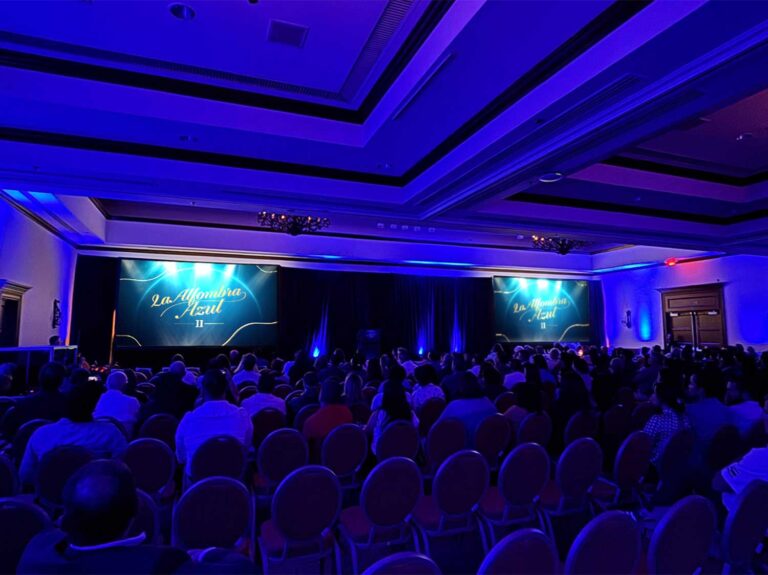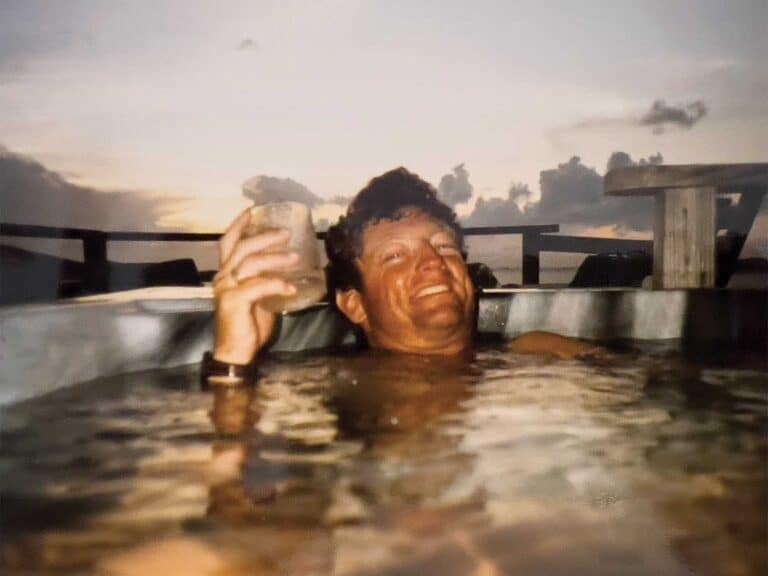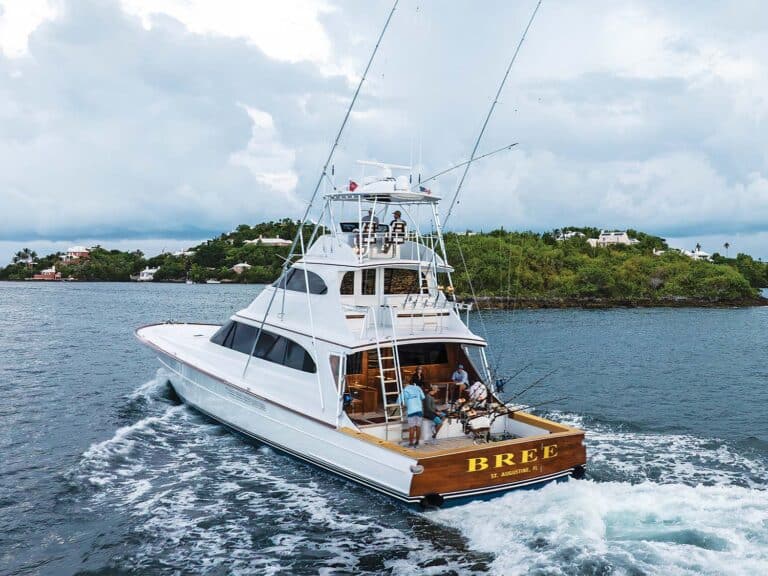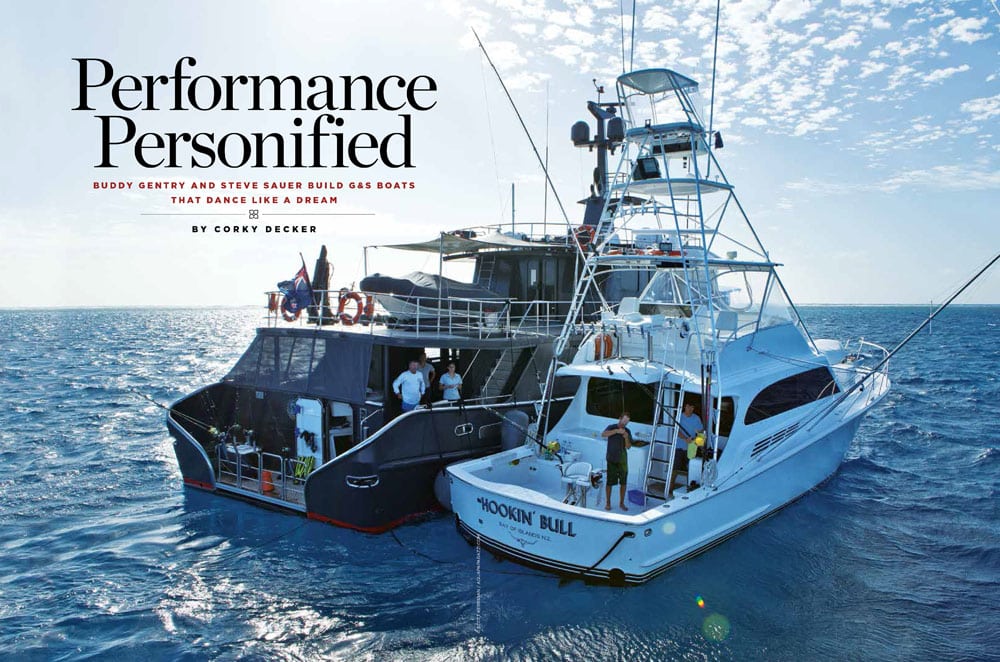
With many marriages never making the 10-year mark, it’s amazing that the boatbuilding partnership between Buddy Gentry and Steve Sauer has lasted for more than 40 years. And they haven’t just hung on either. The pair constantly pushes the edges of performance and styling on purpose-built sport-fishers to the point where a G&S has become the boat of choice for many anglers choosing to chase world-record fish on light tackle.
During the late ’60s, Gentry was a well-known Destin, Florida, charter-boat captain, while Sauer attended Lousiana State University, where he was working on his engineering degree. The two young men got together in the offseason and built their first fiberglass boat. When Sauer graduated, he convinced Gentry that they could build boats for a living, and G&S was born.
Gentry and Sauer started out building charter boats for the Destin fleet, primarily a beamy, 31-foot sport-fishing hull that was an instant classic among the local cobia fishermen. They ended up building 15 of those. As the Destin charter fleet grew, so did G&S. Orders started to increase throughout the ’70s, and the two men branched off into building their first high-end game boats. The boats got bigger, the teak more beautiful and the hulls more finely tuned for chasing billfish.
With the new game-boat market opening up, Gentry and Sauer needed a larger shop, so they moved their operation from Destin to Freeport, Florida, in January 2000. They built a shop large enough to build two boats at a time if needed. They also purchased a travel lift large enough to handle any boat they would build in the future. This opened an opportunity for the Destin Fisherman’s Co-op to start up a boat yard next door to G&S, so the whole community benefited from the move. The new more efficient shop also enabled the pair to build larger boats and finish them faster. It was about at this time that the two made the decision to concentrate on the high-end sport-fishing market.
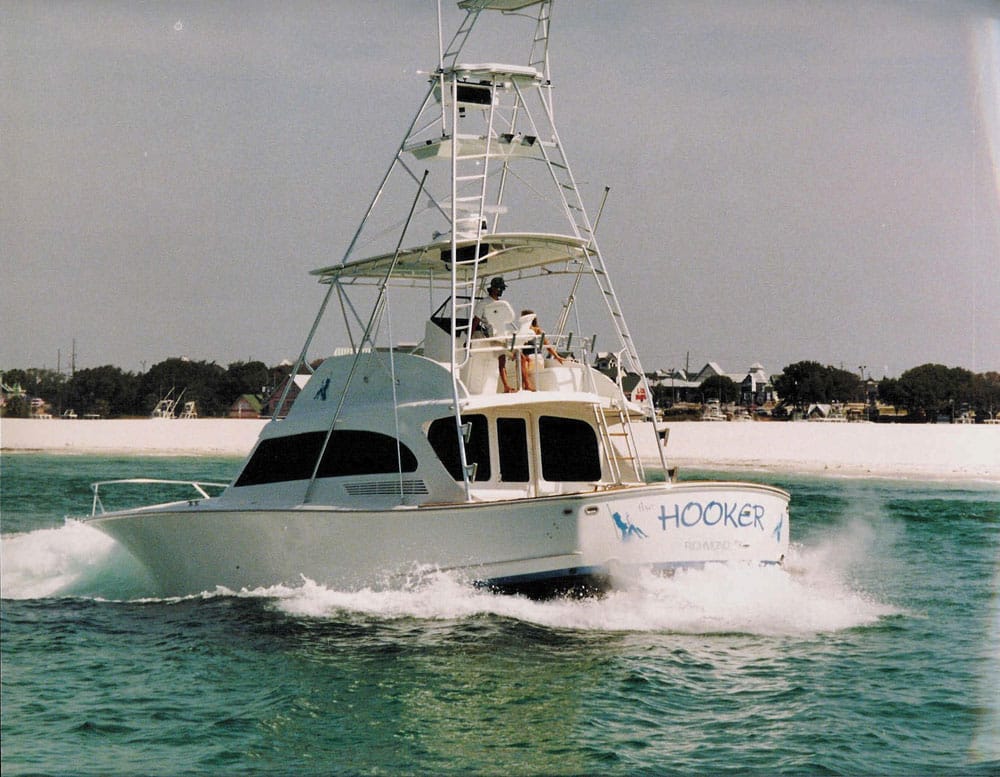
Performance First
G&S builds every hull using fiberglass and composites with no structural wood. Sauer’s engineering background and design aesthetic shines through in the boats’ beautiful lines, wheel pockets and shaped sterns -— the latter two aspects providing G&S boats with extreme backing capabilities. It is easy to see why these boats are so in demand with light-tackle anglers.
While G&S boats are known for their ability to maneuver in reverse like no other, they are custom boats, and no two are the same. Some just out-perform others. “We built several boats with the same hull as Hooker, but none performed in reverse like Hooker,” Gentry says. “We figured the center of gravity was farther forward because the 903 Cummins were so much heavier than the engines in the other boats. No one else wanted a light-tackle boat at that time, so we didn’t think much about it. Then, some of the owners of the larger boats — large was 55 feet back then — wanted more maneuverability and speed in reverse, so we built a few of them with the cutaway stern. The cutaway didn’t provide as much lift as we thought it would, but it did let cleaner water get to the props.
“Much of the cavitation you get in reverse is caused by turbulent water coming to the props,” Gentry says. “That hard corner where the transom meets the bottom causes most of this turbulence. Putting a big, 4-degree corner there eliminates a lot of that turbulence and therefore provides more speed in reverse. The cutaway stern doesn’t work well on smaller boats because of the reduced bottom area. You need all of the bottom you can get to carry all the fuel necessary to make long passages and the great fishing locations. The old real estate adage ‘location, location, location,’ applies in light-tackle record fishing too.”
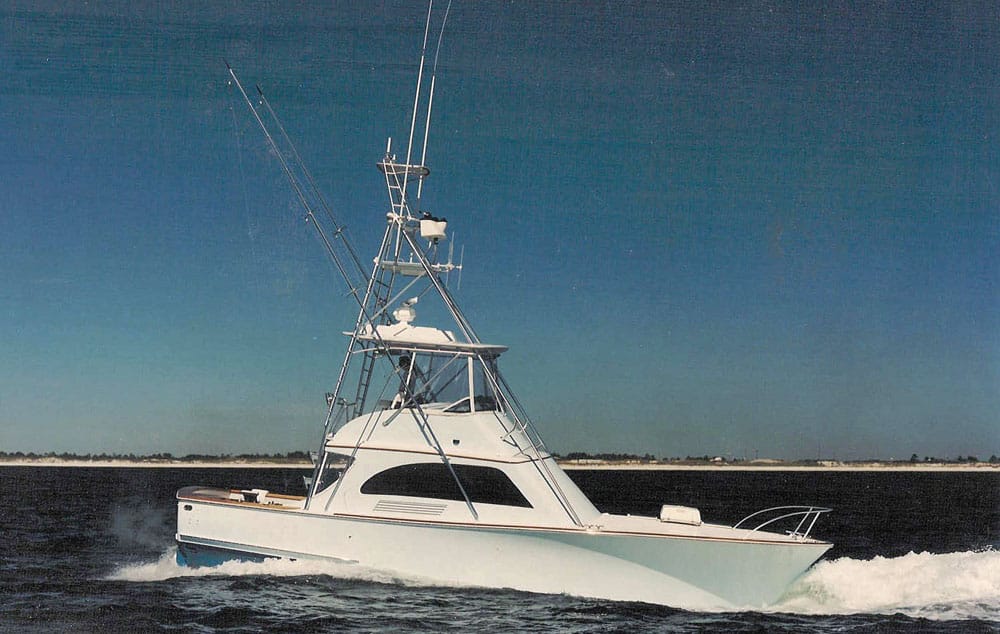
It took a lot of experimenting with demanding, passionate customers to get the boats to perform like they do today. In 1994, Capt. James Roberts was working for big-game angler John Paul Richard. Richard was looking for a game boat that he could piggyback aboard his 165-foot mothership and fish his way around the world. Roberts was familiar with the performance abilities of Hooker, and he wanted something similar for the game boat. He made a visit to G&S and ordered the 41-footer that would eventually become French Look.
“French Look was a very light day boat with the engines spread well apart, so it performed very well,” Gentry says. “On sea trials, however, Roberts wanted to get more speed in reverse. We worked out some maneuvers that would keep the stern up long enough to close that gap when the fish hasn’t given up and you can’t quite reach him.”
But this still wasn’t enough. Roberts wanted more. So they put three people on the bow, and that did the trick. The boat rose up in the stern and actually planed in reverse. Since you obviously couldn’t have people riding around up on the bow all the time, they put a bladder tank in the rope locker that you could fill with water. Roberts later figured out that if he transferred fuel to that tank, he got the weight forward that he wanted, and he also removed weight from the stern that he didn’t want.
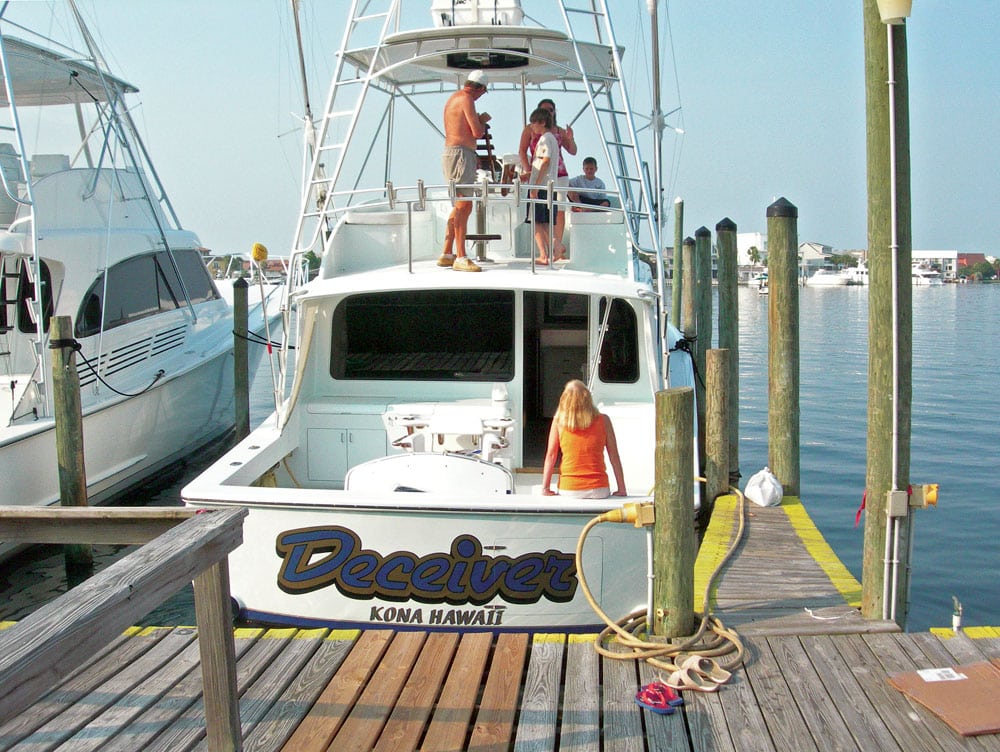
“We have refined that system quite a bit since then,” Gentry says. “Back then, all the fuel was in the stern. When the boat was full, the stern squatted. When the boat was light on fuel, the stern was in the air. We started distributing the fuel so that, as the fuel was burned off, the boat came up evenly. That helped everything. We still put a tank well forward so that we can pump fuel into and out of to give enough ballast to get the stern up”.
Besides the weight-shifting tricks, G&S also utilize prop pockets, or tunnels, and curved transoms to help the boats back up. “The reduced down angle of the shaft and the fact that the props are closer to the surface means there is less turbulent water coming to the props when in reverse,” Gentry says. “The round stern also makes for a boat that backs up more quickly because it won’t push a big mound of water in front of it. The last big challenges we now face are computerized engines and electric shift transmissions that won’t respond quickly enough to do what French Look did. I guess we will have to work on that now.”
Those tunnels also lessen draft, which helps in finding your way through the reefs and marinas in some of the out-of-the-way places that people go to fish for world records. Gentry, who has a fisherman’s background, knows that someday, someone is going have to fix something or replace a part. He builds his boats with this fact in mind.
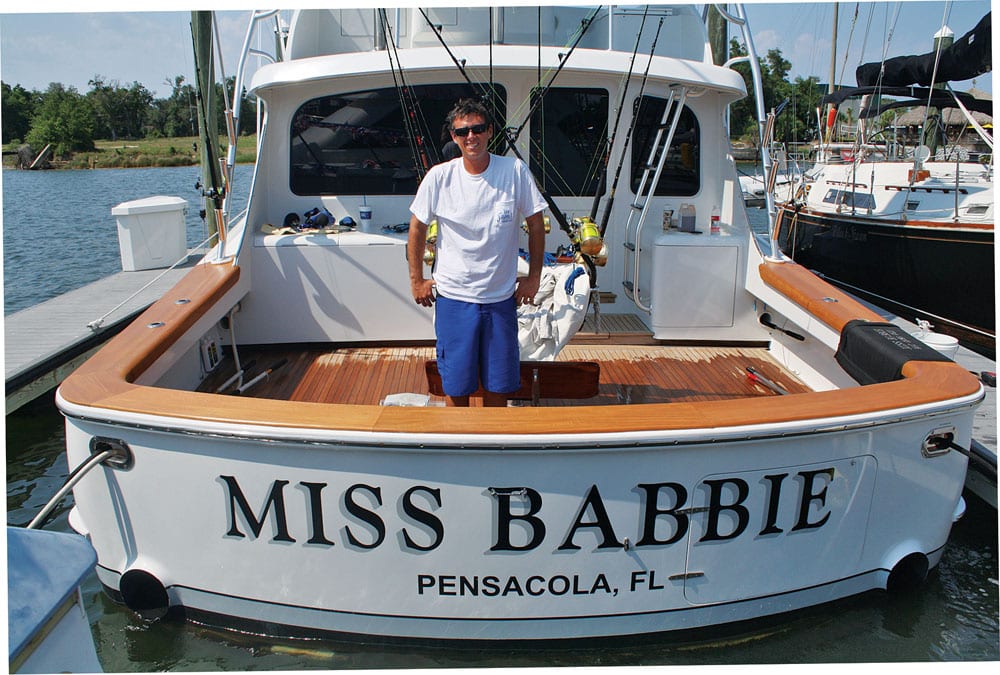
My Experience
In my 30 years of marlin fishing, I have at one time or another fished on just about every brand of sport-fishing boat built and have been very fortunate to operate two G&S boats, a 41 and a bit bigger 51. Comparing the two very well-equipped boats, you would assume the 41 would be cramped and, well, small. Just the opposite is true. Driving Deceiver felt like driving a Porsche. She is fast and handles around a dock like a pod boat. The back deck has a lot of room for a 41-foot platform, and like all G&S boats, the 41 is a great sea boat. I’d fish this boat anywhere in the world with confidence; in fact, she is in West Africa racking up mind-numbing blue marlin numbers right now.
The 51 is probably the best marlin platform that I have ever been on, and if I had this boat back in my Vanuatu days, I may have doubled my marlin numbers. Doc Conkle’s Miss Babbie is powered by a pair of 660 hp Cummins and is the most fuel-efficient boat of its size that I have ever even heard of. Now 1,320 hp on a 50-class boat is not a lot of power — I know a lot of guys who have more horses in 40-foot boats. Miss Babbie is a 32-knot boat and will burn only 67 gph on the pins. At a comfortable 21-knot cruise, she is running only 30 gph. When we took a three-day trip from Pensacola, Florida, to Key West a couple of summers ago, we fished our way south, and in 69 total hours, dock-to-dock, we burned a total of 440 gallons. That’s an average of 6.37 gph, including the 15 kW genset. That is just mind-boggling.
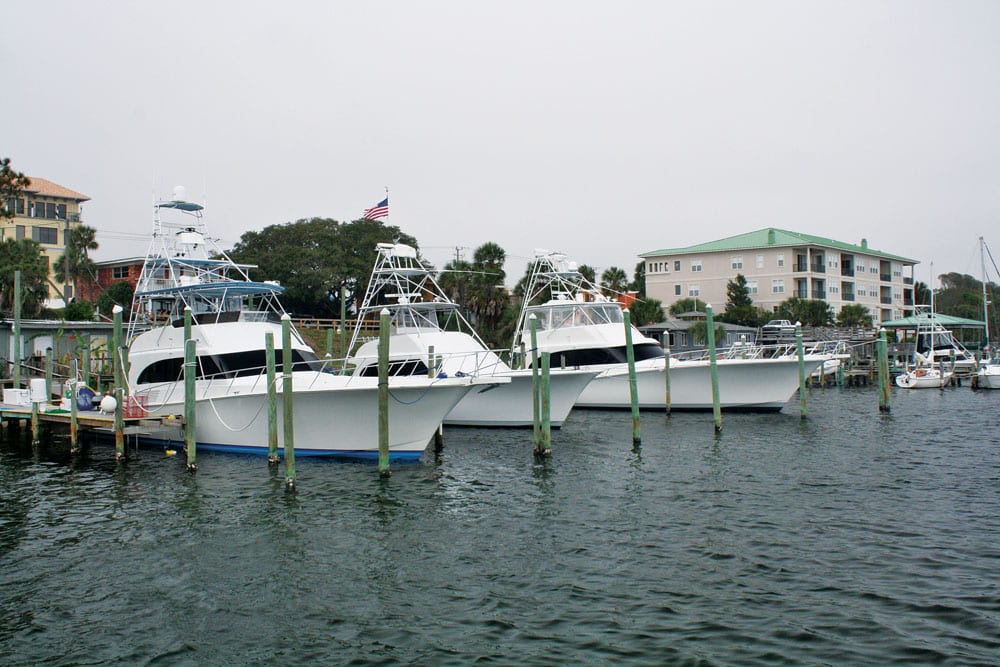
The 51’s cockpit can only be described as huge. There’s plenty of room for multiple crew members, which is probably one reason G&S boats seem to be so popular with record seekers — they need a lot of room for extra gaff men. The engine room makes those Cummins look really small, since there is so much room on the outboard sides. Even though I’m 6-foot-1-inch, I can get around the engines with ease.
A lot of G&S customers have come back and built a larger boat; Conkle’s Miss Babbie is his second boat, replacing the original 41-foot model. The new 65-foot Mollie is the third G&S built by its owner. It’s powered by a pair of 1,900 hp MTUs, and it flat out flies. The old 58 Mollie is now called Papi and is owned by Charles Morgan, who also owns two other G&S boats that he keeps at his restaurant and bar, Harbor Docks in Destin, Florida. That’s where you’ll find Papi, Hey Baby and Lady Em.
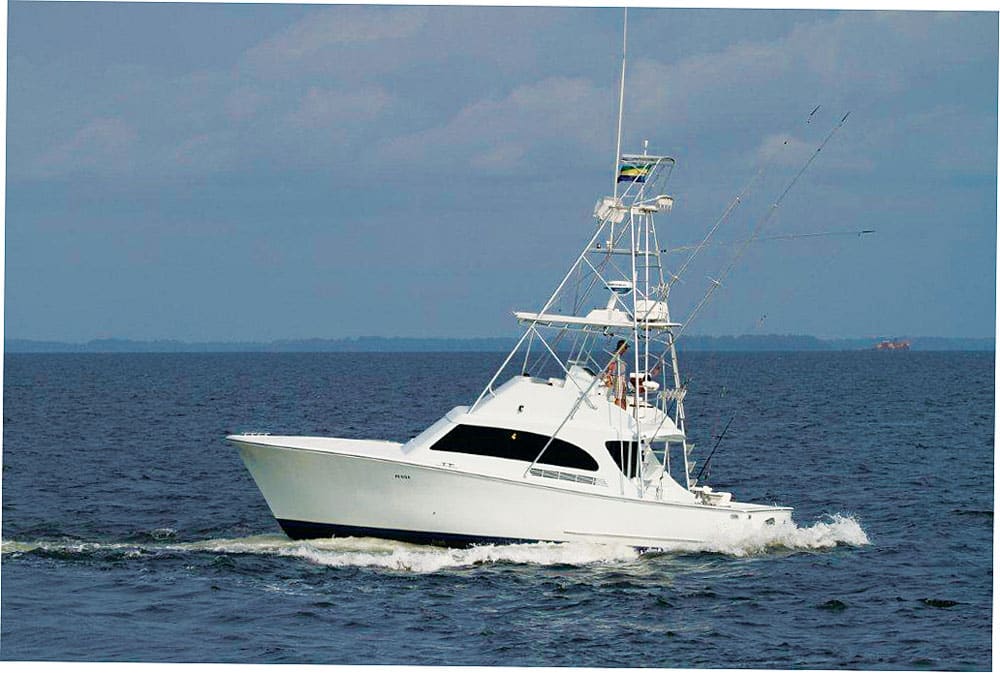
“There are more G&S boats at Harbor Docks than anywhere except for the charter-boat docks,” Morgan says. “I think we have two of the prettiest boats anywhere. There’s never been a boat built better for fishing cobia than Hey Baby, and Papi has caught more billfish than anyone can remember. When we travel in either boat, we get lots of questions and compliments. Besides, the marina at Harbor Docks used to be Buddy Gentry’s mom’s house, and Steve Sauer has spent many an afternoon at our bar. It just seems natural that we would have G&S boats at our docks.”
Although it usually takes more than a year for G&S to build a 50-foot class boat, as this story went to press, G&S had a 51-foot hull for sale in the yard. And of course, it has one of the trickiest sterns I’ve ever seen.
